Cuisine, Table Etiquette
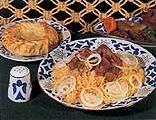 | |
| Pilaw |
It was largely influenced by cuisine of neighboring peoples. Tatar cuisine inherited katyk, bal-mai, kabartma from the Bulgars, pelmeni and tea from the Chinese, pilaw from the Uzbeks, pakhleve from the Tadjiks.
Travelers, who visited Kazan, called national cuisine rich and tasty, plain and exquisite, they were surprised at the variety and rare combination of products as well as unforgettable hospitality. Traditionally, a table was laid in a festive manner and a visitor was treated to the best food - sweet chak-chak (little balls of pastry with honey), sherbet, limeleaf honey, and scented tea. Hospitality in the East was always highly appreciated.
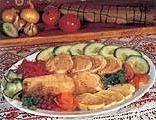 | |
| Kalsha |
Special eating norms and rules were imposed by Islam. The Sheriat forbade using pork, as well as some birds such as falcon, swan considered to be sacred.
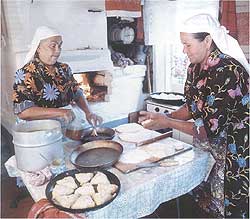 | |
One of the main food bans concerned wine and other liquors. The Koran says that wine, similar to a gambling game, has good and bad points, but the latter dominate. "Wine is an obvious root and source of sins, and he who drinks it loses his mind. He does not know God, respects nobody ... " - Muhammad said.
Each meal, according to adab - Islamic ethics, started with hand-washing. A prayer was obligatory before and after it. Men and women ate separately. Famous Tatar enlightener Kayum Nasyri described a set of table rules: "Sit down to table as soon as a meal is served, do not keep people waiting. Eat with your right hand, if there are respectable people at table, do not touch food ahead of them - it is impolite. Moderate meal is of great benefit - it promotes healthy body, precise mind, strong memory."
The basis of a diet was meat, dairy and vegetable food. The Tatars considered mutton their favorite meat, liked poultry. Popular meat dishes were pilaw and pelmeni, to which a young son-in-law and his pals were traditionally treated.
Mainly milk products - cream, butter - were used. Fermented milk was made into a favorite Tatar drink - katyk, which was used to prepare Tatar curds syuzma. Other sorts of curds - yeremchek, cort.
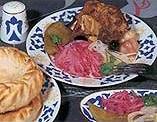 | |
| Zur Belesh |
pastry sometimes replaces breakfast or supper, it is an essential attribute of treating visitors. Historian N.Vorobyev writes: "The most widely spread drink among the Tatars of all classes was tea, which they drank frequently and much, much more than neighboring peoples.
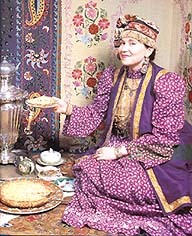 | |
Kazan cuisine, which absorbed the culinary traditions of the Bulgars, Tatars, Russians, Eastern and European influence, is rich in most varied dishes of everyday and festive cooking. And both remarkable national recipes and hospitality, known for centuries, have been kept to this days.